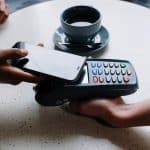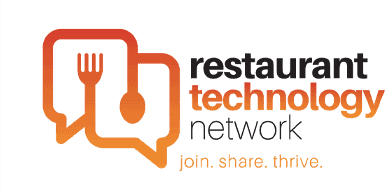The way we pay for things has been evolving away from cash for years now. As we’ve moved from checks to credit cards to contactless payment, cash has been slowly becoming less and less relevant as more convenient forms of payment continue to emerge.
Now, with the advent of COVID-19, another factor has hastened that evolution.
Credit to debit
The historic reasons for seeking non-monetary payment options have generally been a desire for increased convenience.
Paying with plastic means fewer bills fattening the wallet and no more loose change in the pocket. It also gets you in and out of the store much more efficiently.
Of course, plastic doesn’t just mean credit cards. One effect of COVID, in fact, seems not so much to be a migration from cash to credit as it is a migration from credit to debit. According to Visa, debit-card volumes were up 12% and rising in May, 2020.
According to Oliver Jenkyn, Visa’s Executive Vice President for North America, “There’s a consumer psyche of sort of not spending someone else’s money but spending my own money.” Jenkyn went on to say that, based on past behaviors, there could be a $100 billion annual shift to debit-card spending from credit-card spending over time.
Plastic to contactless
The biggest spending in response to COVID, though, has been an exponential increase in the already rising practice of contactless payments. According to data from the 2020 Annual U.S. Debit Card Market Data Review,
- 51% of consumers are using Mastercard contactless (credit, debit, wallet)
- 33% of US consumers have switched their top-of-wallet card to contactless
- 45% of US consumers prefer to shop at stores that have contactless POS
- 56% of US consumers will continue using contactless post-COVID
- According to Visa, 31 million Americans tapped a Visa contactless card in March, up from 25 million in November
- Visa contactless usage has grown 150% since March 2019
Sure, we still like the convenience of quicker, easier payments, but the focus of consumers as we all moved into quarantine moved quickly from one of convenience, to one of eliminating as many points of physical contact as possible.
With cash, there’s no telling how many times it’s changed hands.
Plastic is better, but it still requires contact with card readers or cashiers, as well as contact with a pen to sign much of the time.
With contactless payments, however, there’s no more handing things over at all. Just a wave of a card, or a hover of a phone, and the purchase is made.
But better than that, COVID has brought on or popularized payment methods that require even less contact. A text, a tap on your phone screen, or an online payment is now all it takes. You don’t even have to be in the same room.
Easier spending = more spending
The benefits of going contactless are not confined only to increasing the safety of the purchasing process. By reducing the friction of spending to virtually nothing, contactless payments make the purchasing process as painless as possible. The result is an increase in overall guest spend.
According to a study in the International Journal of Economic Studies, “contactless credit card adopters undertake around 9 credit card payments more at the POS within a month than non-adopters (17 vs. 8 transactions) with approximately 5 and 4 transactions more for retail goods and services, respectively (10 vs. 5 and 7 vs. 3 payments).”
How you can benefit
POS-integrated solutions like OneDine’s offer easy initial setup and data-driven insights to make your operations more efficient and your service more personalized as well as contact-free—all with no app required.
Guests can easily browse the menu, order, and pay right from their table on their mobile device without having to wait for a server to visit them. Not only is unnecessary contact eliminated and service streamlined, but guests can also receive customized recommendations by inputting their dietary preferences, favorite cuisines, dishes, spice levels, and more.
With systems like OneDine’s, guests can experience safe, contact-free payment with a variety of options and in a variety of situations. Curbside, drive up, and delivery options include:
- SMS messages with a link to an online payment portal
- A QR code that can be scanned in order to pay
- Ordering online via custom mobile browsing/ordering website with payment at checkout (or upon arrival via SMS or QR code)
- Or, depending upon contactless preferences, guests may walk inside to pay
For payments inside the dining room, diners can tap a table sensor in order to pay the check, or scan a unique QR code that is printed on the receipt.
COVID and quarantine have affected the restaurant industry in a wide variety of ways. The good news about this particular consequence, however, is that contactless payment is here to stay, and the data shows that—even after quarantine has ended—contactless spending means more spending. And that’s good news for our restaurants’ recovery.





